Ayrton Senna was one of the most naturally gifted drivers ever to park his backside into a Formula 1 car.
His death, 30 years ago this week during the 1994 San Marino Grand Prix, sent shockwaves through not only motorsport, but the wider sporting community.
This is the second of a two-part series on the 30th anniversary of Ayrton Senna's death. For part one, click here.
READ MORE: Dead on arrival: The call that would have saved Senna
READ MORE: Broncos rocked by season-ending injury to star
READ MORE: Raiders win after 'one of the plays of the season'
Sunday morning
On Sunday morning, the drivers met and elected they would reform the Grand Prix Drivers' Association (GPDA) – effectively a drivers' union.
The GPDA had been disbanded more than a decade earlier following the 1982 South African Grand Prix, where the entire grid locked themselves in a room to protest proposed new licence restrictions that would have locked them to one team for three seasons.
While the formalities were to be sorted following the race weekend in Monaco, Senna was voted to be the president.
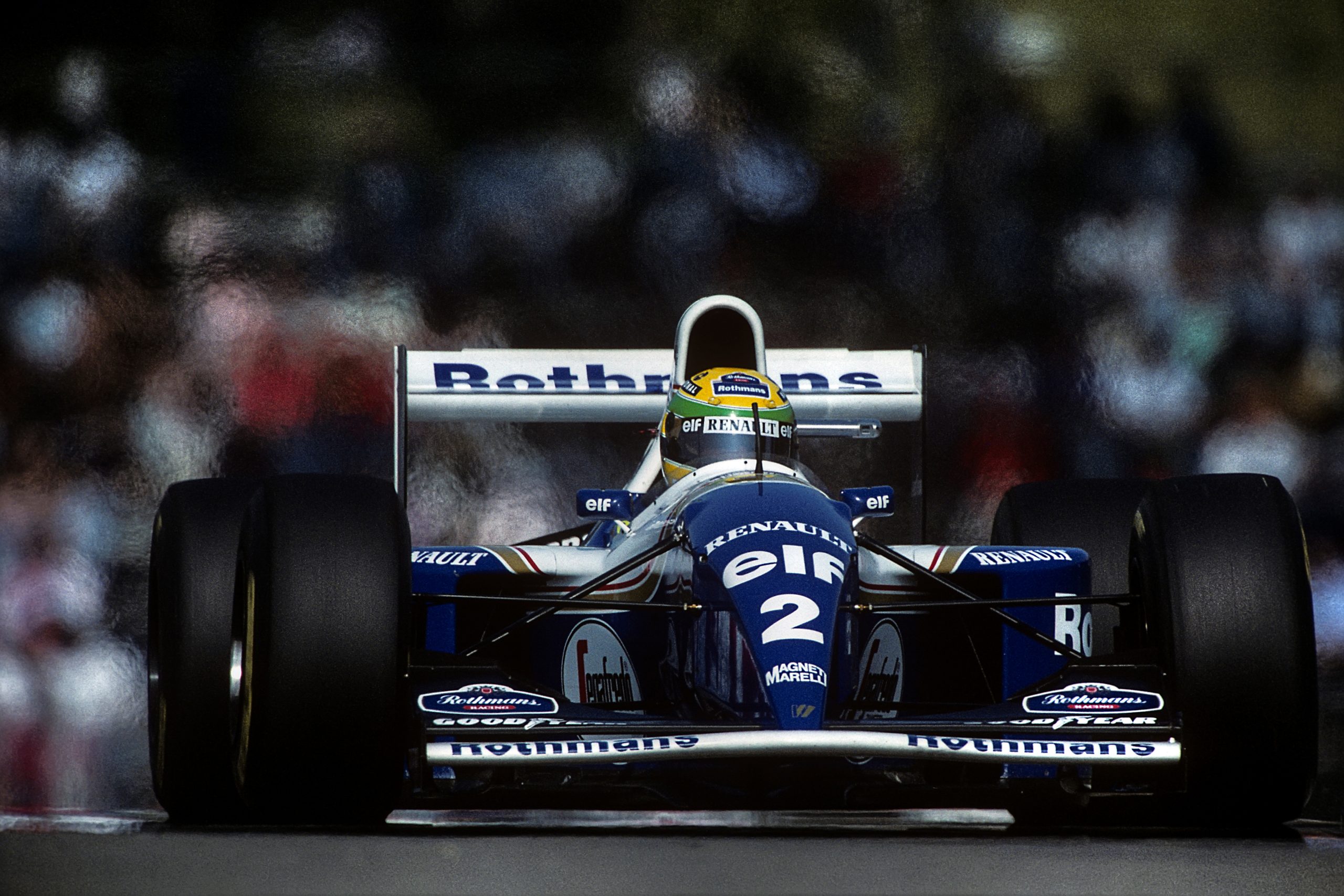
Australian David Brabham was teammate to Roland Ratzenberger, who was killed in qualifying the day before.
"I think it was obvious something had to be done," he told Wide World of Sports.
Brabham said during drivers' meetings, Senna was often the most vocal of his peers, so his appointment as GPDA president made sense.
On race weekends, several drivers briefings are conducted by the senior officials. These meetings are usually where various procedures are discussed, and gives the drivers a chance to raise any concerns they have about anything directly in a public forum.
Senna was seated directly in front of Brabham in the briefing that Sunday morning. Brabham said the mood in the room wasn't frosty, but there was certainly tension.
https://www.instagram.com/p/C6aj6tQC0Hu/?utm_source=ig_embed&
"Senna was always very vocal in any driver's briefing that I ever attended, whether it was in 1990, or '94.
"He always had something to say and of course the room would listen, because it was Senna."
But at the end of that meeting, something odd happened. Something Brabham has spent the past three decades contemplating, but still doesn't have an explanation for.
"When the driver's briefing finished, all the people in front of us, literally all of them walked past and touched him," he said.
"I remember thinking, 'Wow, that's weird'. I had never, ever seen that. It was literally, people were putting their hands on him … why did they do that? You have to ask the question, why did they all go up to him and touch him on the shoulder as they walked past?
"It was as if they were touching him for the last time, and it was really weird."
The Race Start – Crash No.3
As was the case in the first two races in Brazil and Japan, Senna was on pole in his Williams from Schumacher in the Benetton.
When the lights went out, Schumacher's teammate JJ Lehto stalled from fifth on the grid. Most drivers immediately behind managed to avoid hitting him.
But Pedro Lamy – who started way back in 22nd – drove up the back of Lehto's stationary Benetton. He had moved from behind a rival and was completely unsighted. He had no chance of avoiding the crash.
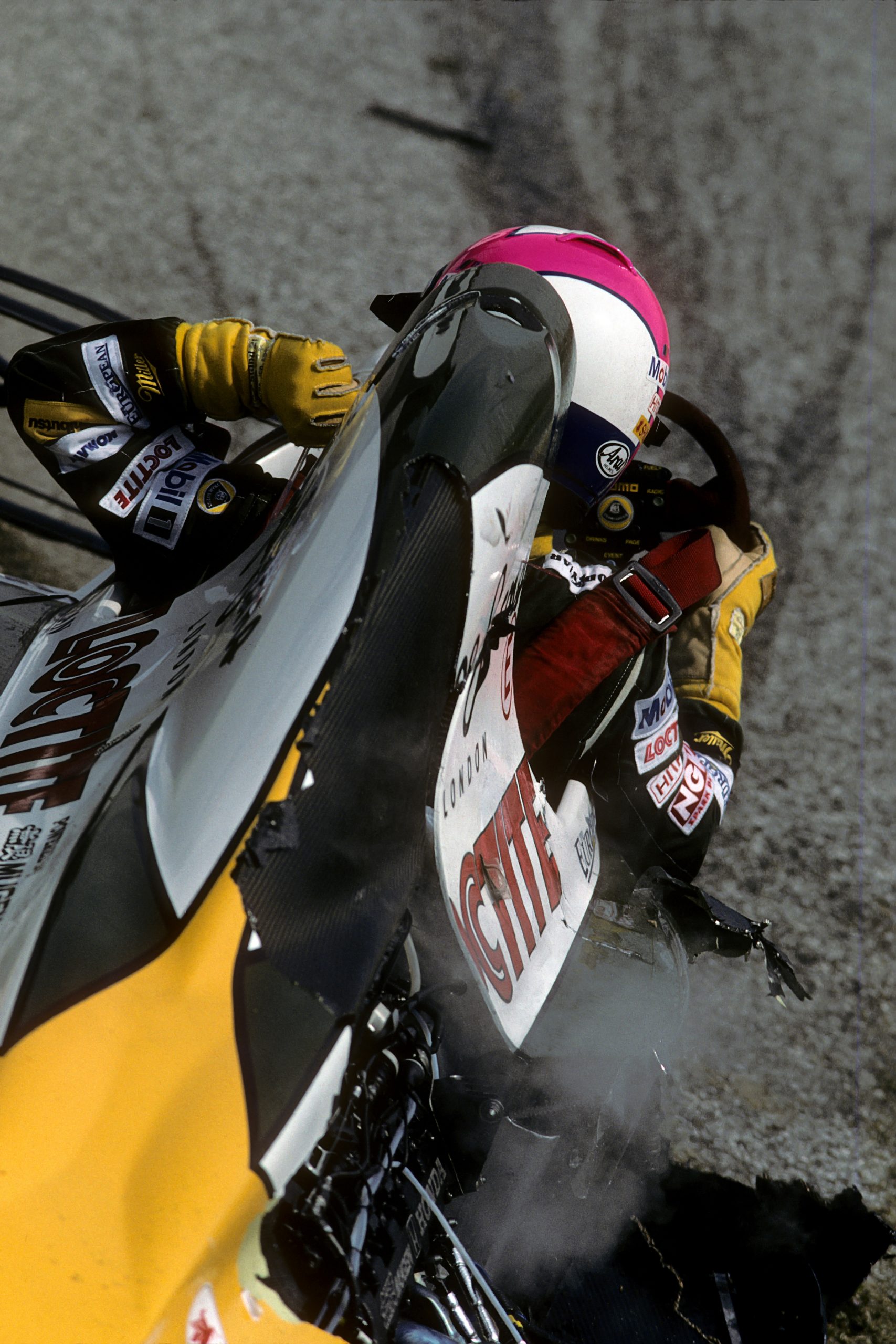
Several large pieces of bodywork, as well as wheel's off Lamy's car flew into the crowd. Eight spectators plus a police officer were injured.
Brabham started from 24th and was right in the thick of it.
"As we started, all of a sudden there was this massive explosion in front of me as cars collided and bits went everywhere," he said.
"You're thinking, 'Oh, for Christ's sake, not again'. It was like one thing after another, after another."
The safety car was deployed. It was only the third time in history it had been used, having only been introduced in 1993.
Unlike today, where the safety car is a high-performance road car, the safety car in Imola was an Opal Vectra.
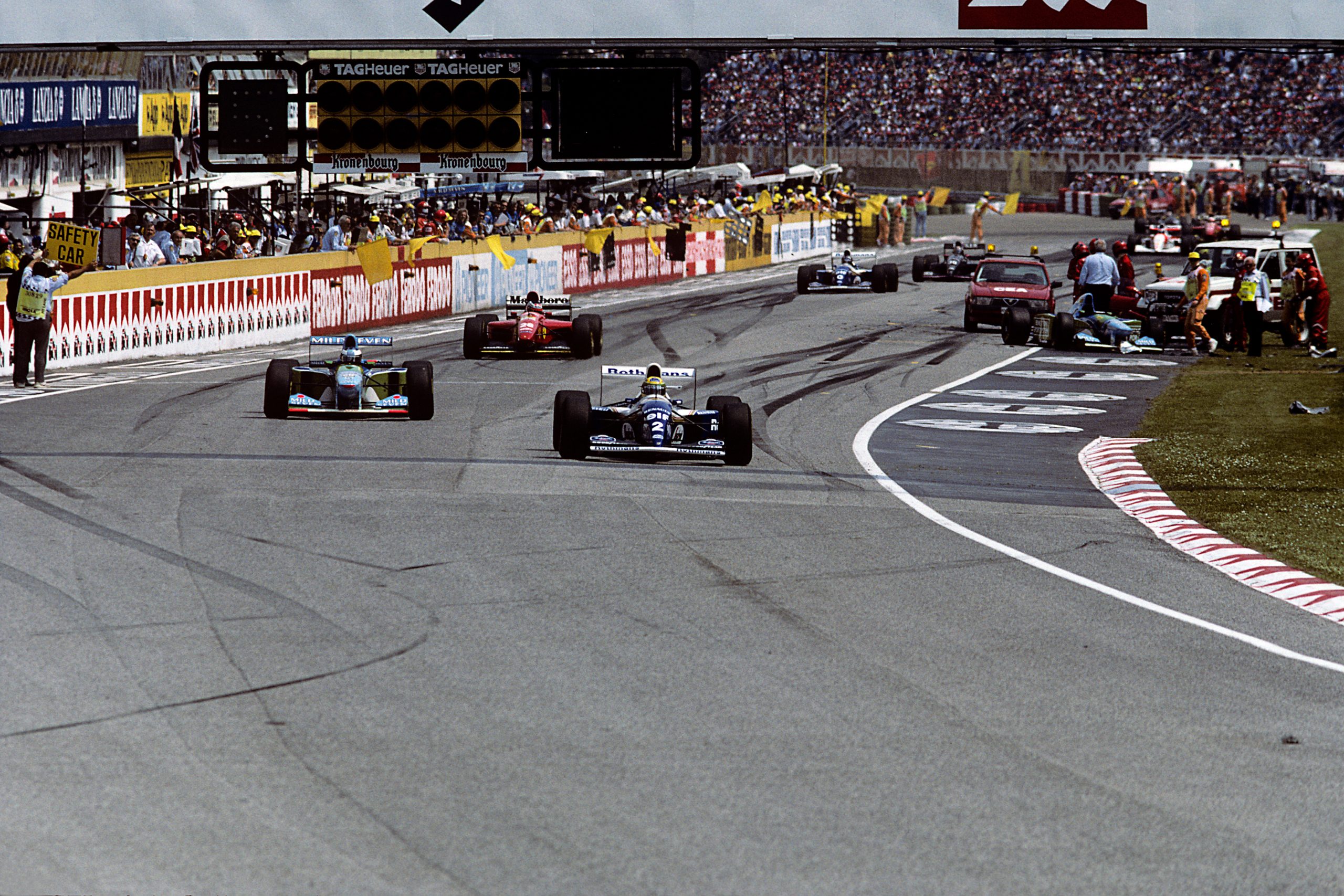
In the earlier driver's briefing, Senna was among several drivers who had expressed concerns over the safety car and its ability to drive at a suitable speed.
When driving at speed, friction across the road surfaces causes the tyres to heat up, which optimises grip. When they drive slowly – when behind the safety car, for example – the tyres cool down, lose pressure, and performance drops.
The safety car was so slow, Senna – who was leading the race after the start crash – pulled alongside to tell the driver to speed up.
The driver was Italian Max Angelelli, himself a capable race car driver. It wasn't known at the time, but Angelelli was driving the safety car so fast already its brakes were overheating, and he had to slow down or risk crashing it himself.
The safety car led the field for five laps.
https://twitter.com/depressedsebfan/status/1328933009056272386
'What on earth happened there?' – Crash No.4
At the start of lap six, the race resumed. The inside of the Tamburello corner was incredibly bumpy. Some drivers were taking a slightly wider line through the corner to avoid the bumps, but that's a longer way around the lap, and therefore slower.
Senna, ever wanting to lap the circuit as quickly as he could, had been taking the bumpy inside line all weekend.
At the start of lap seven, the world television feed was onboard with Schumacher in second place when Senna's car disappeared from view to the right of the shot.
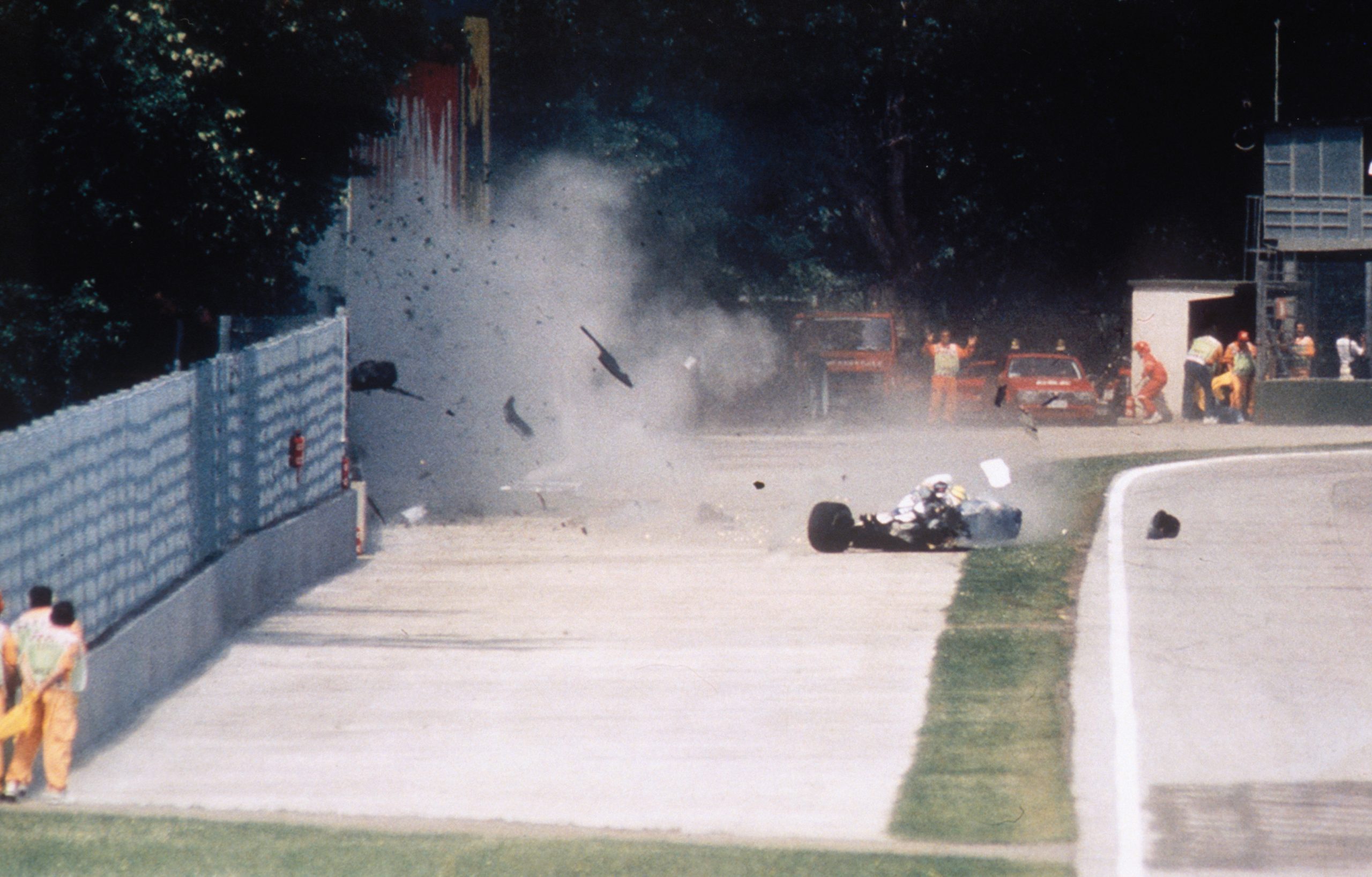
The TV feed cut to a front-on shot just as Senna's car smashed into the wall. Car parts littered the circuit as the rest of the field came flying through the scene.
He hit the wall at 211km/h.
"Senna, my goodness," quipped the legendary commentator Murray Walker.
"I just saw him plunge off to the right, and Senna has joined Pedro Lamy and JJ Lehto in a shattered motor car.
"What on earth happened there?"
Images broadcast around the world – and on Channel Nine in Australia – showed a close-up of Senna's head. It was immediately obvious the crash was bad.
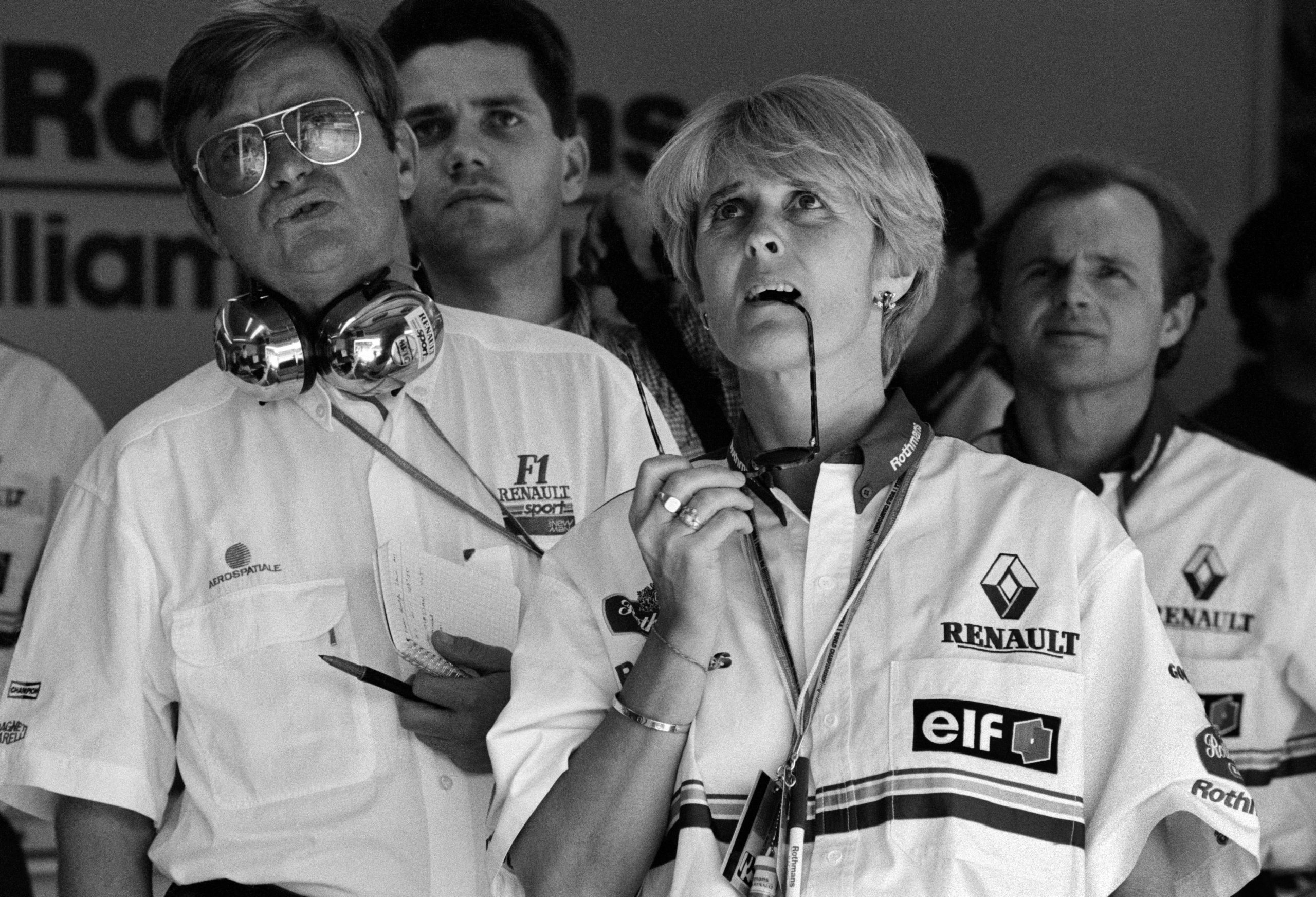
When Brabham got to the scene, he thought the blue car in the wall was a Tyrell. It was unthinkable for it to be Senna.
The red flags were shown. F1's doctor, Professor Sid Watkins was a close friend of Senna. He arrived at the car only moments after it had come to rest.
But by the time he arrived, Senna had lost some four litres of blood through a gash on his forehead. A piece of debris had pierced the visor on his helmet.
Senna had a faint pulse, and Watkins performed a trackside tracheostomy and ordered for the helicopter to take Senna straight to the Maggiore Hospital in Bologna – the third driver that weekend to be taken to that hospital.
As Senna was airlifted to hospital, the Williams team had to regroup – they still had Senna's teammate Damon Hill in the race.
After a 37-minute red flag, the race was resumed. Schumacher won the race from the Ferrari of Nicola Larino and the McLaren of Mika Hakkinen. Out of respect for Ratzenberger, there was no champagne sprayed on the podium. Hill was sixth.
They were informed on the podium Senna was in a critical condition.
"I can't feel satisfied, I can't feel happy," Schumacher said in the post-race press conference.
More than two hours after Schumacher took the chequered flag, at 6.40pm local time, head of the Maggiore Hospital's emergency department Dr Maria Teresa Fiandri pronounced Senna dead.
She gave his official time of death as 2.17pm, ruling his injuries – skull fractures, brain injuries, and a ruptured temporal artery – killed him instantly.
In his 1996 book Life at the Limit, Watkins said while Senna did indeed have a faint pulse, he said his dilated pupils suggested to him the Brazilian's brain was no longer functioning. He said he and every other medic working on the scene knew their efforts would be in vain.
Senna had an Austrian flag furled up in the cockpit with him, indicating he planned to pay tribute to Ratzenberger after the race, should he have won.
He was 34.
His death sent shockwaves through not only motorsport, but the wider sporting world. For Brazilians, Senna's death was a national tragedy, and the government declared three days of mourning. He was given a state funeral in Sao Paulo only days later, which drew more than half a million people into the streets.
When Brazil won the FIFA World Cup later that year, the team held up a banner dedicating the win to him.
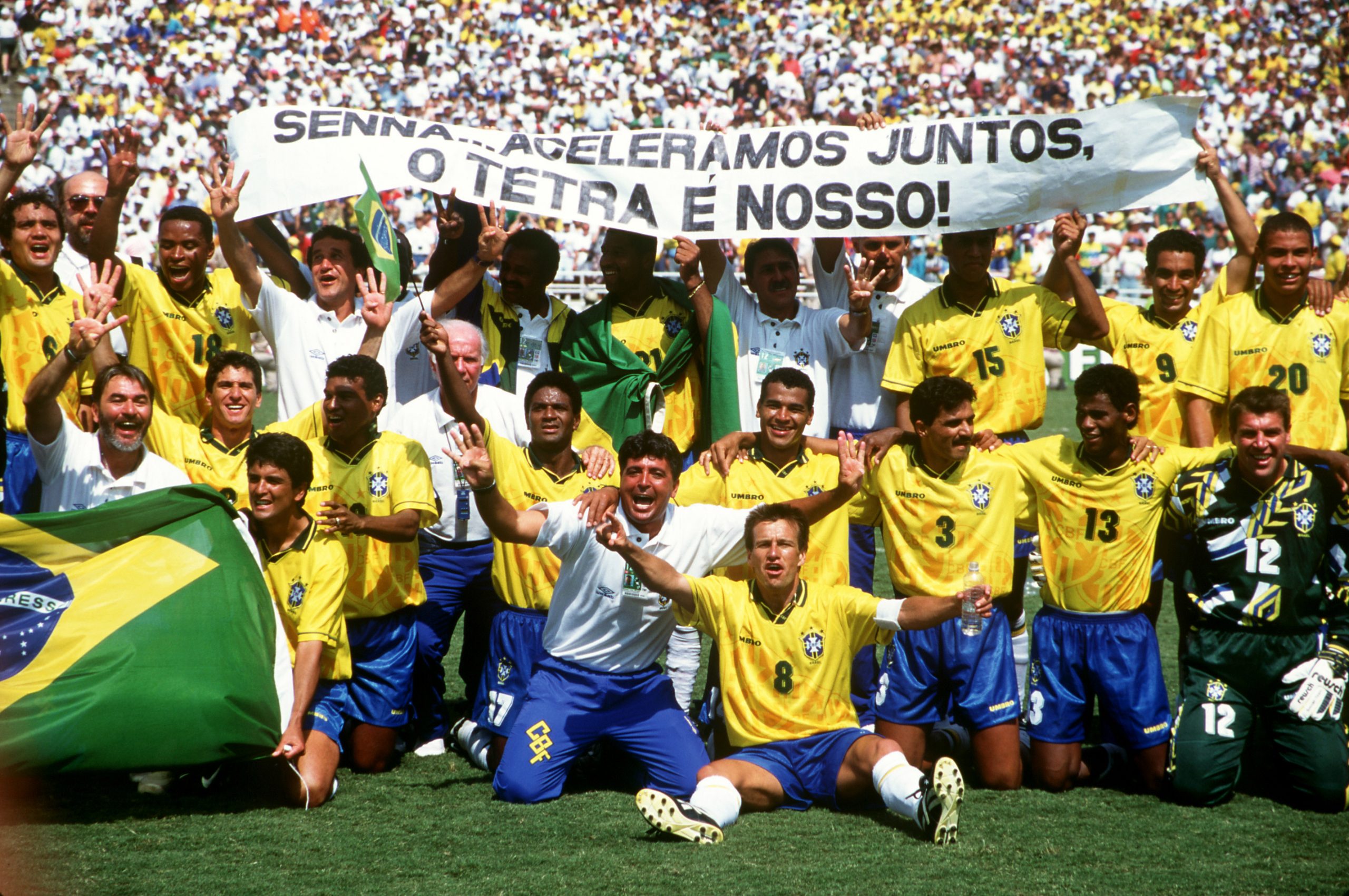
The steering column
Italian law says unless a death is ruled a suicide, someone must be held accountable. As a result, prosecutors commenced legal proceedings against six people connected to the crash.
Three were from the Williams team (owner and founder Frank Williams, engineering director and co-founder Patrick Head, and chief designer Adrian Newey), as well as Fedrico Bendinelli (representing the track owners), circuit director Giorgio Poggi and race director Roland Bruynseraede.
Court documents list the official cause of the crash as a steering column failure. It was found snapped in the car.
In his 2017 autobiography How to Build a Car, Newey explained Senna had earlier in the weekend asked for the position of the steering wheel to be altered slightly to stop his knuckles from rubbing on the inside of the chassis. To make the change, the steering column was altered.
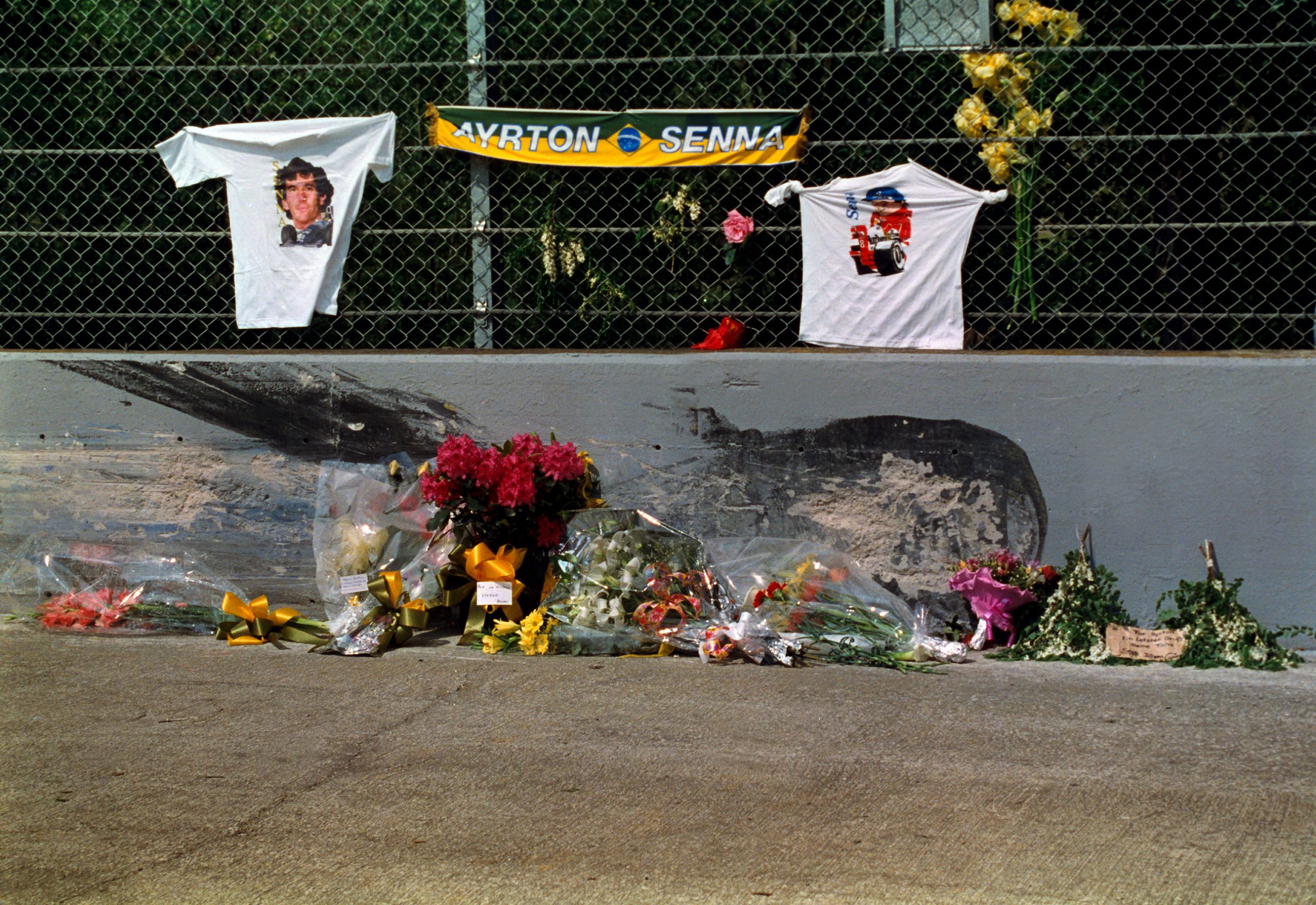
When the team got Senna's car back, the steering column had indeed broken where the alterations were made. There were also fatigue cracks about a third of the way around the broken column.
The steering column theory stacked up.
But when they got access to the onboard footage from Schumacher's car, it showed the rear end of Senna's car stepping out – the opposite of what would've happened if the steering column had failed.
It also showed the car emitting a shower of sparks from the rear end, indicating it was bottoming out – the bottom of the car was literally striking the ground over the bumps.
That was peculiar too. The car was sparking the lap before on the restart due to the tyres being softer after five laps under safety car, but it should've stopped after a lap at racing speeds. The heat generated by the tyres around the previous lap should have lifted pressures back to normal, and raised the car to the optimum ride-height.
The car had two onboard computers – one controlling the engine, and the other running the car's electronics and data logging.
https://www.instagram.com/p/C6a4hZ0JRvy/?utm_source=ig_embed&
The engine controller was completely destroyed in the crash, and the other was badly damaged. However, some data was able to be recovered. Crucially, it included throttle position, brake position and steering torque.
The data logging showed the steering torque dropped to zero – which backed up the theory of the steering column failure.
But when they lined the data up with the footage from Schumacher's car, it painted a different picture.
With active suspension banned for 1994, the car was particularly sensitive to changes in aerodynamic balance. As the car bounces over the bumps, that balance is upset.
When the data and vision was combined, it showed the rear of the car stepping out, at which point Senna lifted well off the throttle and applied opposite lock (that's to say he turned the wheel to the right) – but only as far as straight, which accounted for the drop of steering torque.
He held that for about half a second, and then jumped heavily on the brakes. But once the car was off the racing line, he, like Ratzenberger, was a passenger.
https://www.instagram.com/reel/C6avHA4J0Ai/?utm_source=ig_embed&
Senna held 100 per cent brake pressure and down shifted twice before crashing into the wall. From the data, Newey hypothesised the steering column was not the root cause of the crash.
Was it driver error? But surely a driver of Senna's incredible skill was good enough to catch a slide like that? How did he end up in the wall? And what about the sparking from the undertray?
In the meantime, the team built a mock cockpit, and made the same modifications to the steering column. They then sawed a cut a third of the way through it to simulate the fatigue cracking, and had a driver exert the same forces on it as went through Senna's car.
The column did not fail.
Having said that, Newey admits the fatiguing meant the column would likely have failed later in the race.
But, in his mind, it did not cause the crash itself.
The photo
Newey had been mulling over the Senna crash for three years, and had since joined McLaren when a photo was published in the February 1997 edition of Autosport magazine.
The image was of Senna about to drive over a piece of debris left on the track from the start line crash.
The debris was perfectly lined up with the two right side tyres, and was plenty big enough to cause a puncture, which would have caused the sparking.
It presented a new theory, which Newey believes explains the crash much better.
With the tyres potentially punctured, this would have further compromised the aerodynamic stability. The bottom of the car is also obviously not the tyre, and provides no lateral grip.
Put this together, and as the car hit the bump, it jerked to the right. Senna applied opposite lock, but as the airflow reconnected, the rear tyres gripped. Senna's opposite lock became positive lock, and the car steered to the right. It's a similar phenomenon sometimes seen in NASCAR.
Even for a driver of Senna's calibre, once that car flicked to the right, he was going to crash.
The steering column? Likely broken on impact.
The exact cause will likely never be known, although Newey is convinced it was not driver error.
Some 13 years after the crash, in 2007, all charges against Newey and Williams were dropped.
https://twitter.com/historyinmemes/status/1786128527231725885
For the record, similar charges were brought against Simtek for Ratzenberger's death, but were dismissed quickly. Newey believes the reasons were largely political, and due to Senna's fame.
People ask me if I feel guilty about Ayrton. I do. I was one of the senior officers in a team that designed a car in which a great man was killed. Regardless of whether that steering column caused the accident or not, there is no escaping the fact that (the altered column) was a bad piece of design that should never have been allowed to get on the car.
What I feel most guilty about though, is not the possibility that steering column failure may have caused the accident – because I don't think it did – but the fact that I screwed up the aerodynamics of the car. I messed up the transition from active suspension back to passive and designed a car that was aerodynamically unstable, in which Ayrton attempted to do things the car was not capable of doing.
Whether he did or didn't get a puncture, his taking the inside, faster but bumpier line in a car that was aerodynamically unstable would have made the car difficult to control even for him.
I think now, If only we'd had more time. By Imola, I understood the problem. I just needed time to develop the wind tunnel model and then the parts to go on the car, to give Ayrton a car that was worthy of him. Time denied us all that chance. – Adrian Newey, How to Build a Car, 2017.
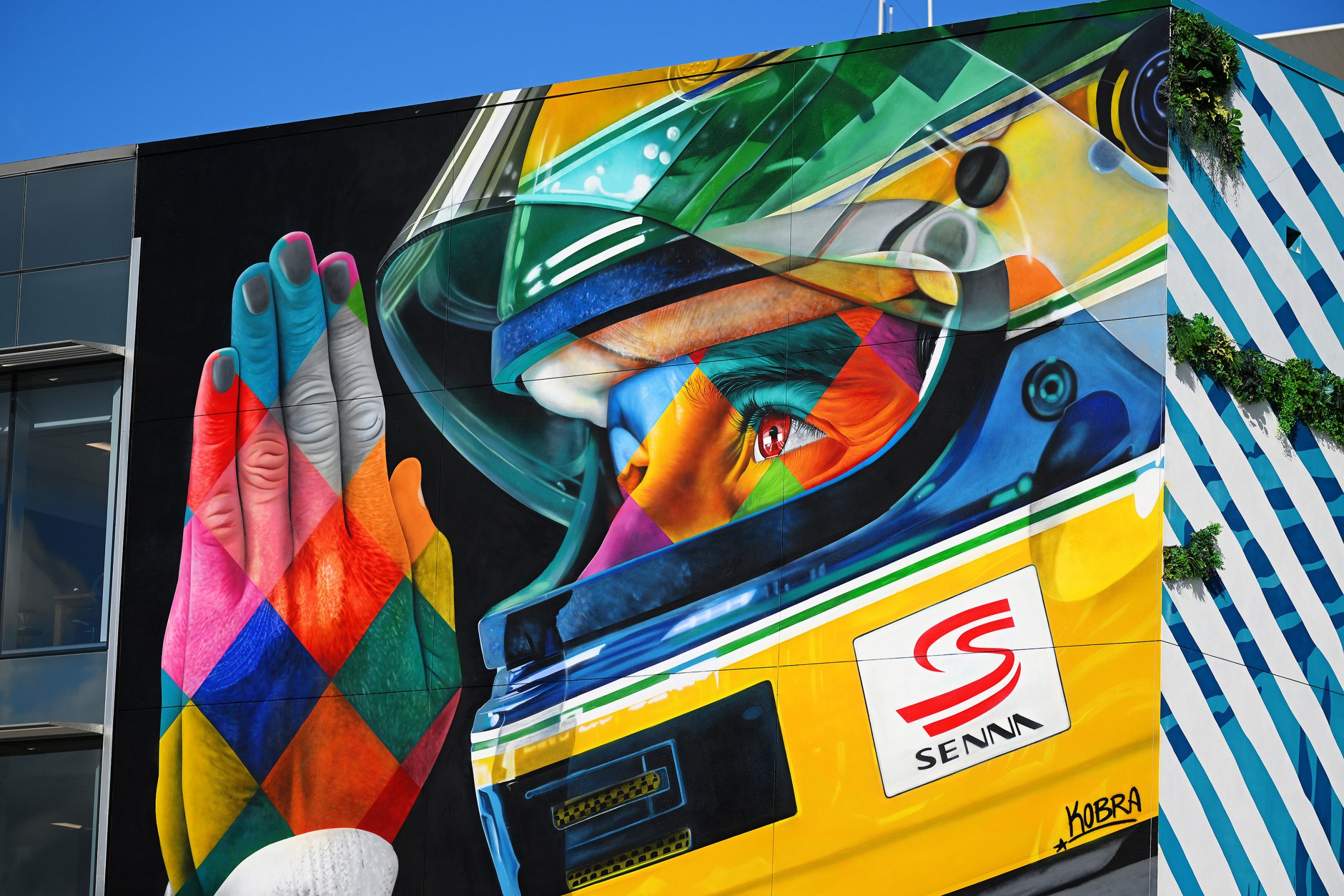
'It was an error'
Australia's most recent F1 world champion Alan Jones was on hosting duties for Australian viewers on Channel Nine that night.
As is the case now, the European races took place late on Sunday evenings in Australia. He and the late Darryl Eastlake were watching the race from Nine's Sydney studios.
Jones told Wide World of Sports his memories of that night are hazy, but remembers ad-libbing through much of the red flag after Senna's crash.
The world feed was showing replay, after replay, after replay of the crash. As such, Nine had switched to a feed from a BBC camera in pit lane, leaving he and Eastlake to effectively fly by the seat of their pants.
Senna wasn't the first to crash at Tamburello – Nelson Piquet, Gerhard Berger and Michele Alboreto had all had monster crashes at the same place in previous years and walked away.
"I didn't think it was as bad as it turned out to be," Jones recalled.
"When cars go off on that particular corner, they normally go off at a great rate of knots … but to be honest, it looked like an accident he could have walked away from.
"But it was a little shard that got into his helmet that killed him."
Senna's teammate Damon Hill believes Senna's crash was driver error. Michael Schumacher agreed, as does Jones.
He rubbished Newey's complicated explanation.
"The reason for the crash was tyre temperatures and the pace car going too slow, and when the pace car pulled in, he tried to go through the corner at the same speed he did when the tyre pressures and temperatures were correct.
"And she went straight ahead virtually."
And what about the puncture theory?
"Ayrton would have realised if he had a puncture – the steering would have got a little bit heavier or something.
"All these f–king theories and bullshit that goes around, it just … gets up my nose.
"It was an error."
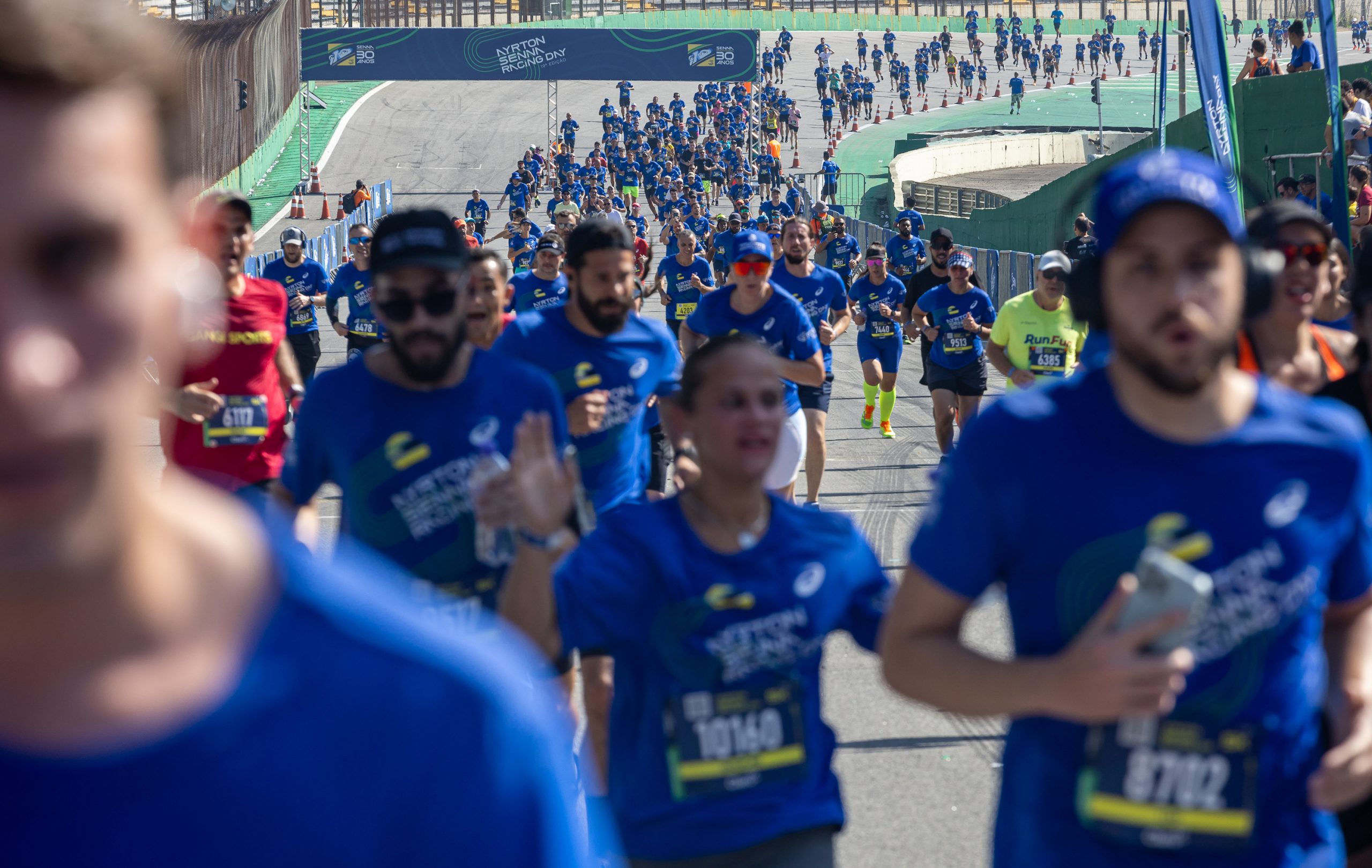
The legacy
From that darkest weekend has come an abundance of light. As tragic as it was, Senna's death was not in vain. It triggered the biggest regulation overhaul in the name of safety in the sport's history.
In the following years, new aerodynamic regulations were introduced in a bid to slow the cars down. Suspension changes were also mandated in an effort to reduce the chance of wheels breaking loose in a crash. Eventually, that led to the introduction of high-strength wheel tethers.
The sides of the cockpit were also raised in an effort to protect the drivers' heads. The dimensions of the cockpits themselves were also changed. Foam headrests to cushion some of the impact in a crash were also introduced.
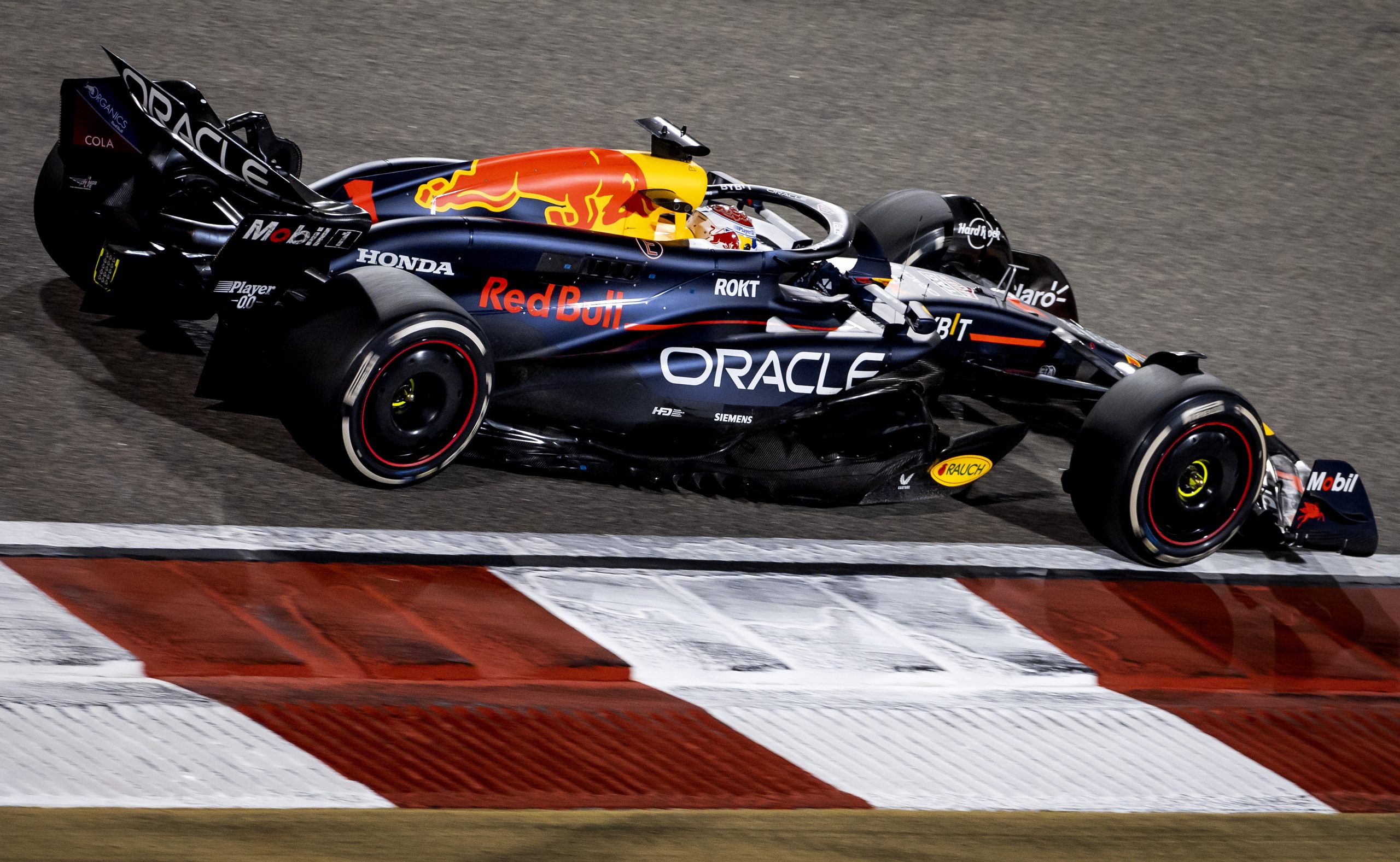
Minimum requirements in crash testing were also increased.
But it wasn't just the cars that changed. The FIA also introduced new rules about how the circuits themselves are constructed. Run offs were changed, and new technologies were developed that would lead to barriers that dissipate energy in big crashes.
At Imola, new chicanes were built at Tamburello and Villeneuve.
And for the drivers themselves? Dale Earnhardt's death in the 2001 Daytona 500 NASCAR race triggered the development of the HANS (Head and Neck Support) Device – a brace which sits underneath the driver's seatbelts, to which two straps are fastened to the driver's helmet.

It stops their head lurching forward in frontal impacts – which is what killed Ratzenberger and Earnhardt.
Only one driver has been killed in modern F1 machinery since Senna, Jules Bianchi as a result of a horrific crash involving a trackside recovery tractor in typhoon conditions at the 2014 Japanese Grand Prix.
And like Senna's, Bianchi's death brought about changes to the safety car procedures, including the introduction of the virtual safety car, and how and when recovery vehicles can enter the track.
But most notably, it brought about the introduction of the halo from 2018 onwards. In F1 alone, that device has been credited with saving the lives of Charles Leclerc in a first corner crash at the 2018 Belgian Grand Prix, Romain Grosjean in his fiery crash on the first lap of the 2020 Bahrain Grand Prix, and Zhou Guanyu in his scary flip at the start of the 2022 British Grand Prix.
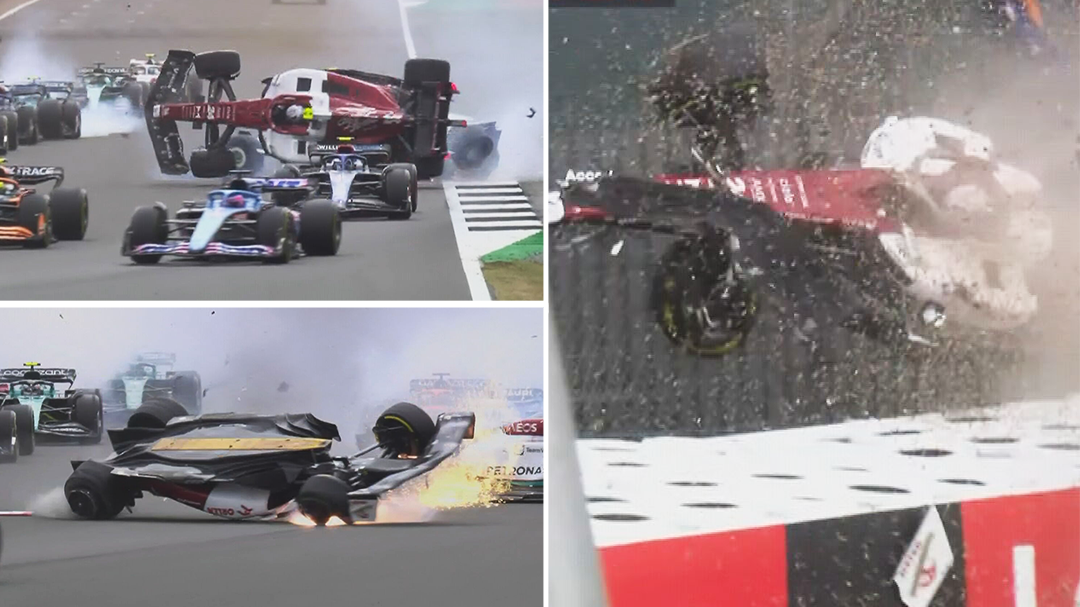
Also compulsory on every new open-wheel car built anywhere in the world, there have been countless others in other categories.
As a side note, Senna's crash also led to an overhaul in how big crashes are broadcast on the world feed. Never again would images of a driver with obviously-serious injuries be allowed to be repeatedly broadcast.
No replays were ever shown of the Bianchi crash, and to date, no official footage has ever been released.
Much of what is on the cars now was probably unthinkable that day, just as the safety on the cars 30 years from now likely is.
The important thing is from each serious crash, lessons must always be learned.
Imola has a permanent memorial to Senna on the outside of the circuit near Tamburello. Year-round, it's covered in flowers, flags, and various other tributes.
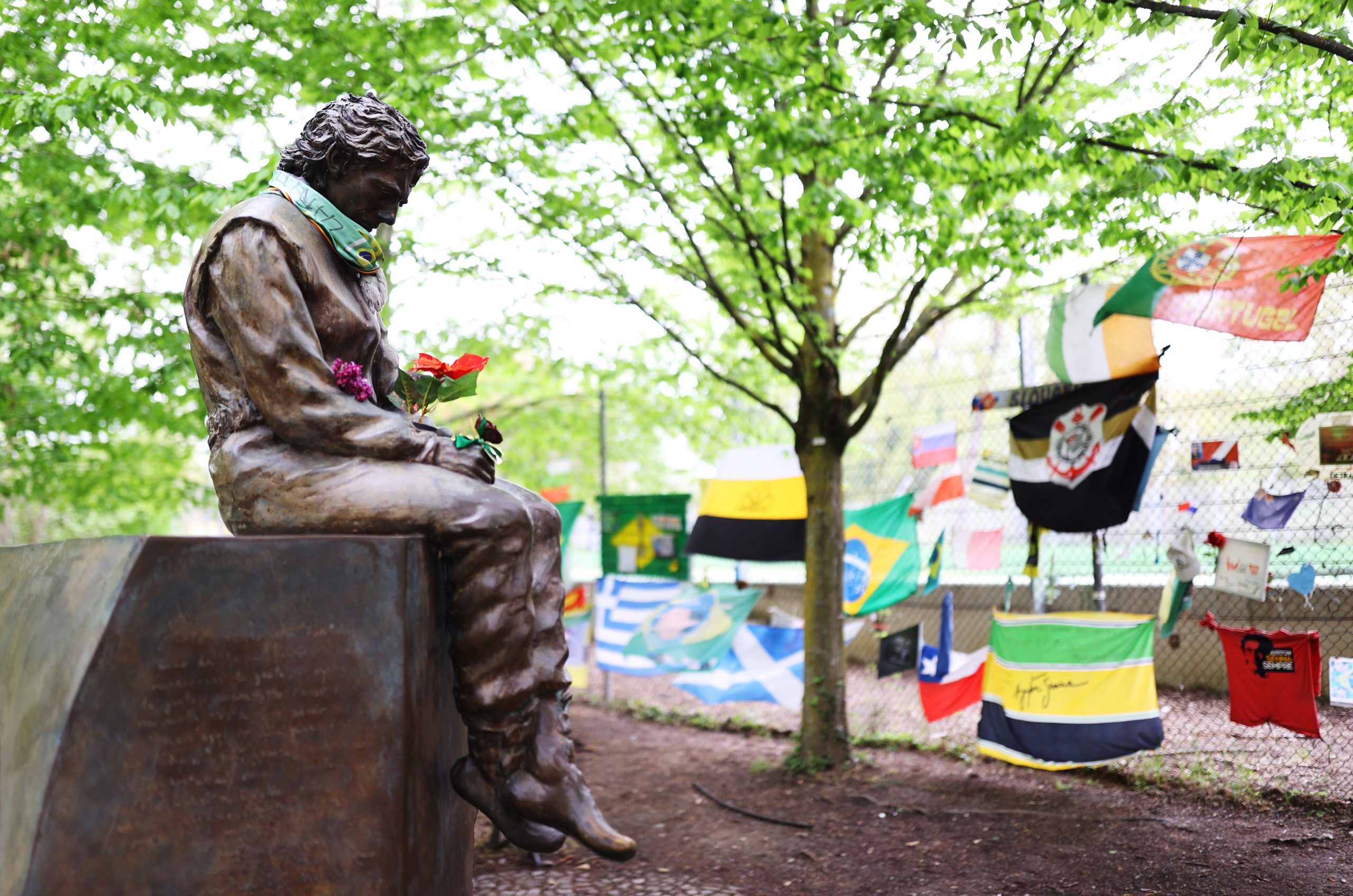
On the 30th anniversary, the circuit was opened to the public to walk around, and a memorial was held. A similar event was held at the Sao Paulo track, home of the Brazilian Grand Prix.
"Senna's death has played a big role in history for F1," F1 chief executive Stefano Domenicali told RacingNews365 this week.
"Senna's impact in terms of safety has been tremendous. After his death, the FIA made major changes that have made the sport safer. Senna's legacy in that has been enormous.
"On one hand it is annoying for Imola that people will always be reminded of this tragic moment, but on the other hand from a historical perspective the incident is huge. It will always make us remember what changed afterwards.
"Therefore, the legacy of Senna will always live on."
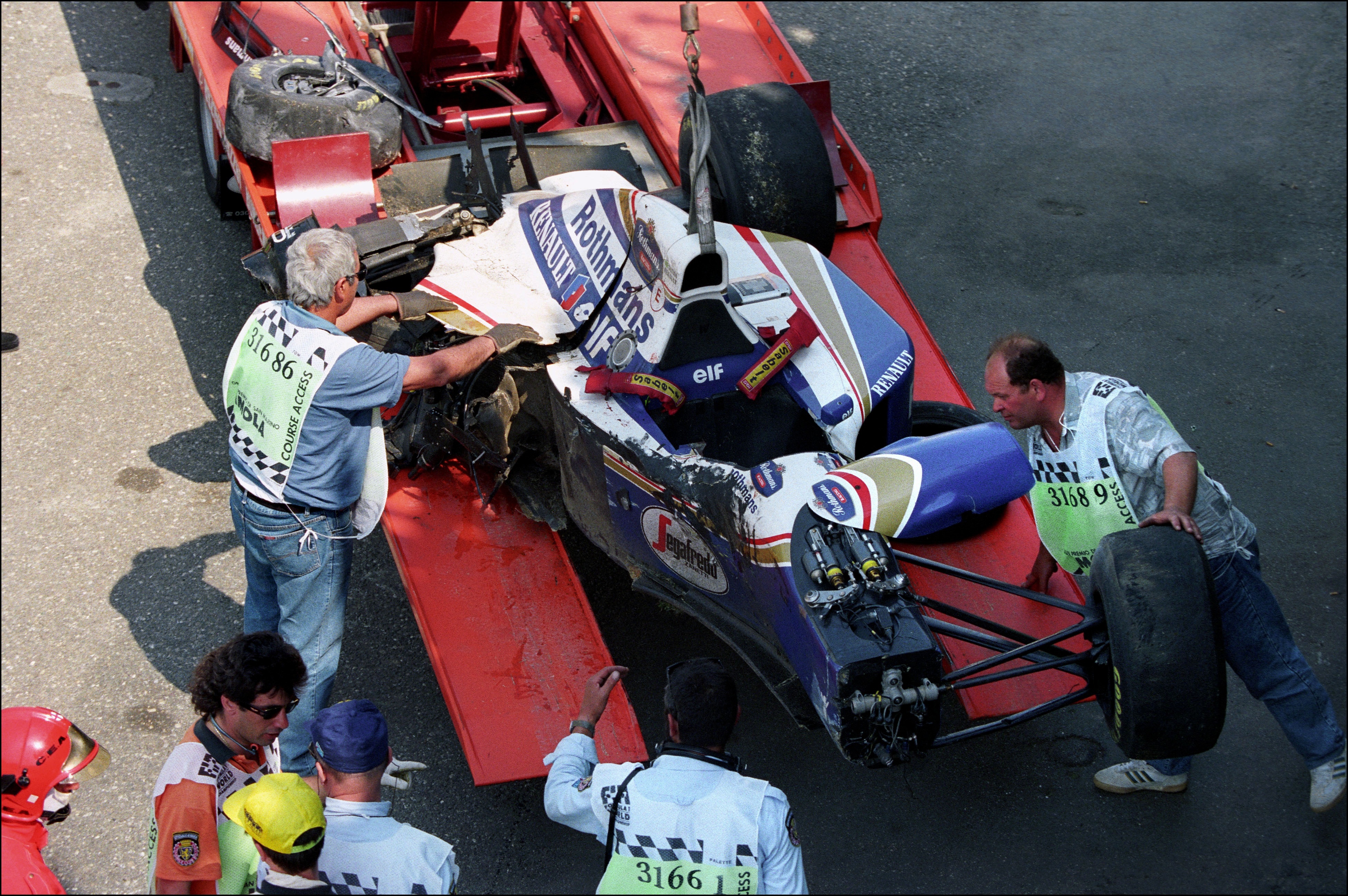
Leave a Reply
You must be logged in to post a comment.